the Virtual Panel Investing in Nature

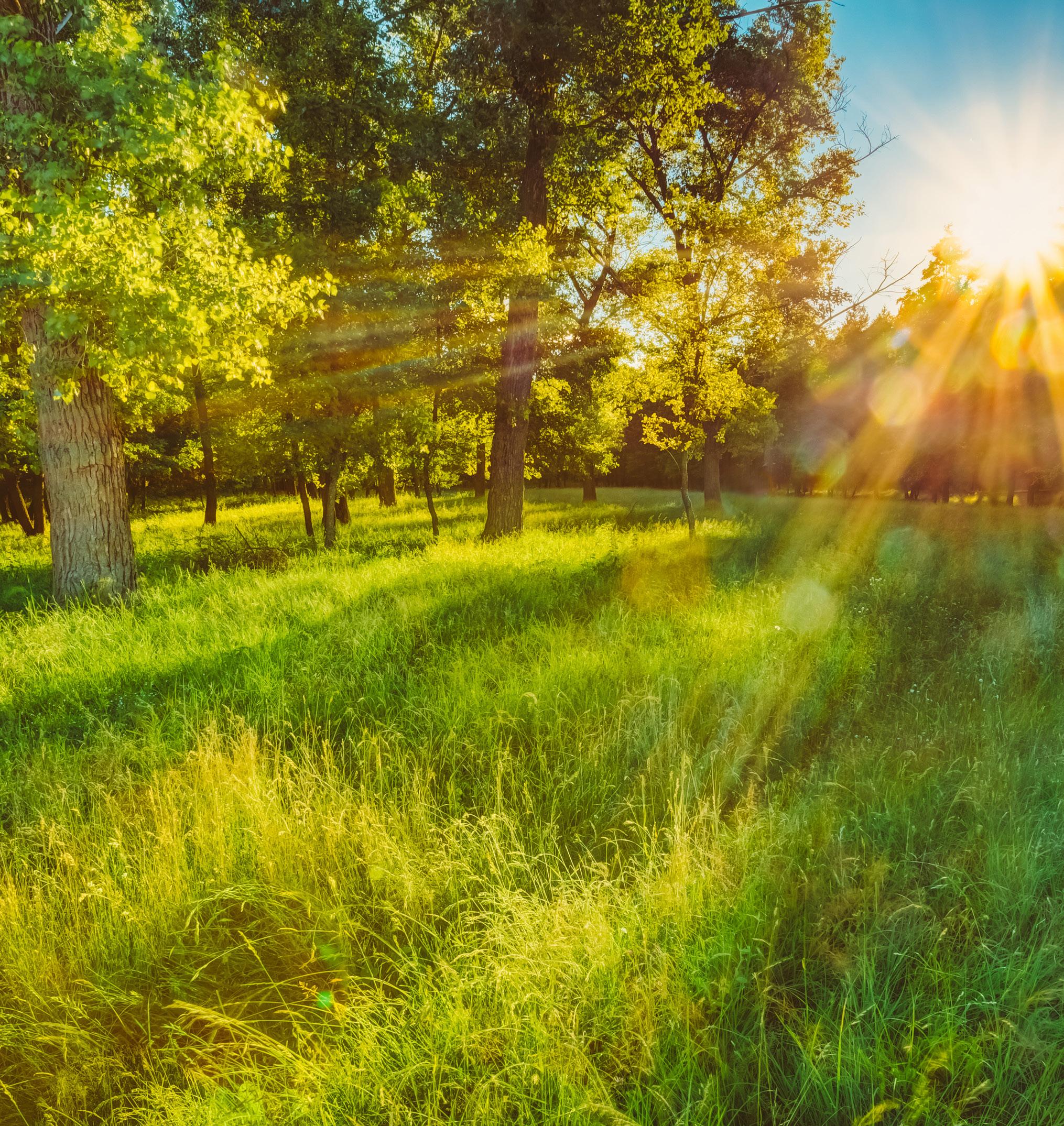
“Nature-based investment aims to tackle an existential risk... and brings great investment opportunities"

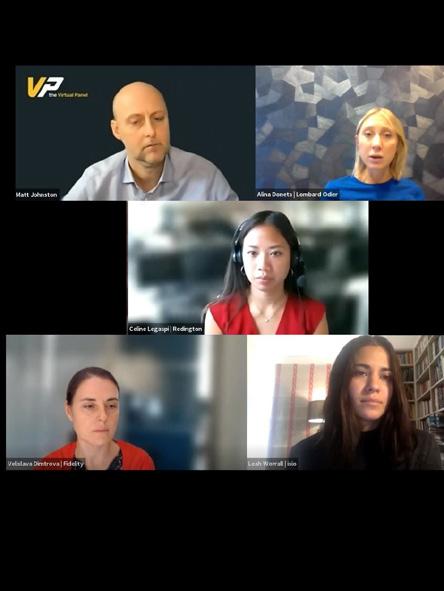



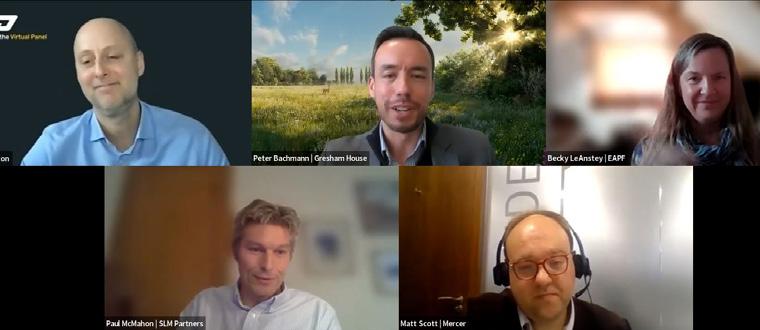



“Nature-based investment aims to tackle an existential risk... and brings great investment opportunities"







the Virtual Panel was born out of the 2020 Covid-19 pandemic. A time where technology provided the medium to keep Asset Owners, Investment Managers and Consultants talking and sharing ideas.
We curate panels of leading investment managers and subject matter experts to get under the skin of an asset class or subject and investigate the outlook, the opportunities and risks.

With 60 Panels completed, supported by 55 different asset managers & featuring investment leaders across Institutional, LGPS and Wealth, the VP has become a ‘go to’ in high quality virtual events.

As the pandemic disruption fades, we have added small group in-person roundtable and summits to our platform.

When it comes to the Environmental (E) frontier of ESG, Cliimate Change has taken virtually all of the investment community’s bandwidth. But that Is changing, and fast.
2019’s Economics of Biodivesity: The Dasgupta review and many excellent natural world TV documentaries have highlighted the alarming decline in Biodiversity and Nature-based systems, and the existential risk this brings.
The investment industry has stood up and listened! Excellent work is being done to educate, engage, regulate and ultimately allocate capital to address the risks and opportunities.


In our virtual panel trilogy, we welcomed experts from leading asset managers, from asset owners, and from investment consultants to explore:
n An introduction to the key concepts, the risks the regulation, and the opportunities n Sustainable agriculture and the future of food n Investing in Biodiversity
Short summaries of each event are set out inside. For a deeper dive into the Nature-based investment pool, we recommend you view the panel recordings. They are embedded in the magazine for your viewing pleasure!

Our magazine also includes fascinating articles from our sponsors and guest views. A big thanks to all who contributed.
If you are looking to learn more about Naturebased investment, we think this is a great place to start (or, indeed, continue). We hope you agree!


For around a decade the investment community has been massively accelerating the work it is doing to understand, invest and engage in addressing climate risk in portfolios.
Attention is increasingly turning to the parallel existential risk of destruction to the natural world: Along with climate change; population growth, deforestation, pollution and unsustainable farming practices are key contributors to an alarming decline in ecosystems and biodiversity.
The Virtual Panel assembled leading asset managers and contributors from the asset owner and investment consulting community to explore over a series of three panels. The first of our panels introduced key concepts setting the scene for the challenges and the opportunities ahead.
a new epoch of naturebased investment
Click
Top
Bottom row: Elizabeth O’Leary, David Vyravipillai
1Natural Capital, a relatively nascent investment area, is drawing increasing investor attention. The investment community has ramped up efforts to address climate risk. Focus on biodiversity and ecosystem destruction has quickly followed
Schroders’ Andy Howard advised the industry is on a steep learning curve; but progress is being made. Engagement with companies and asset owners is on the rise. The capital needed to address existential risks is vast, and this opens a large investment opportunity set in the years to come.
3Liz O’Leary of Macquarie Asset Management set out how nature-based investment fits in portfolios. Traditionally offering income, diversification and inflation protection, innovation in carbon and nature-based credits offers the potential for new return streams.
Data and mapping exposure is an obstacle, but we are learning fast David Vyravipillai, is a lead analyst in Railpen’s Sustainable Ownership team. Railpen is the asset manager for the £33bn railway pension schemes. Over the last 18 months, David and the team have been working hard to understand what biodiversity and natural related risk mean for the portfolio and where they have exposure. A dearth of data means mapping exposure has been a challenge.
Data access and knowledge gaps were acknowledged by all on the panel. Schroders’ Global Head of Sustainability, Andy Howard, compared measurement to climate change metrics to contextualise the difficulty, 'Climate change has a relatively straightforward measurement in ‘tons of carbon’ which people agree on and understand'. A similar, uniform

Elizabeth O’Leary is Head of Agriculture and Natural Assets at Macquarie Asset Management
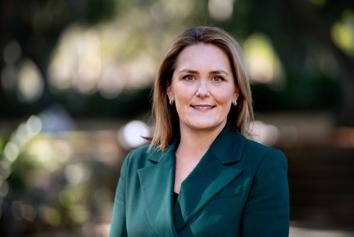
Robert Gardner is Director of Investments at St James’s Place and Board Member at Rebalance Earth


David Vyravipillai is an Investment Manager in the Sustainable Ownership team at Railpen

Matt Johnston is founder of the Virtual Panel and chaired the panel

measure doesn’t exist in the concept of ‘nature positive’. Further, unlike climate change, biodiversity risks are localised. Understanding where thousands of securities have exposure is not a simple question to answer. But, he added, we know some industries have more risk exposure in their supply chains than others, and we know there needs to be global improvement in how and where we source natural resources and their efficient utlisation.
Technology, regulation and positive intent can come to the rescue Liz O’Leary leads the agriculture and natural assets practice at Macquarie Asset Management. She also represents Australia on the Taskforce for Nature-related Financial Disclosures (TNFD).
Whilst the TNFD’s work is helpful in giving direction to the industry, her default is not to wait for regulation, ‘the power of your allocations can influence change' she advised asset owners and advisers.
On the data side, outstanding work is being done in geospatial analysis to improve measurement and transparency. Rob Gardner, representing Rebalance Earth, gave another technological development: The use of distributed ledger technology can also help to place economic value on natural resources, and this is an area society has historically placed negligible value on. But change is coming!
At last, industry focus is placing value on the natural world Climate change has been the industry’s focus in recent years. However, as Howard set out, ‘climate change is symptomatic of a bigger problem, being one of a hungrier, larger, wealthier population placing more demand on finite natural resources.’ This is coming into sharp relief as biodiversity losses escalate and desertification of land and pollution of waterways is stark.
Ecosystems play a wide variety
Carbon capture is one of many natural capital benefits
OECD estimates the value of ecosystem services at $125 140tr annually, 1.5x global GDP
Human activity results in >$10tr in lost ecosystem services
Current rate of global diversity loss is 100 1000 times higher than the (naturally occurring) background extinction rate, faster than at any other time in human history
1.6 earths would be needed to support human demand
60% decline in vertebrate population and 35% decline in wetlands, since 1970
$8tr investment in nature is needed through 2050
3
of roles such as natural carbon capture, recreation, pollination and food resources. Several studies have attempted to value these services. Whilst methodologies differ, the scale is consistently large. An example is the OECD’s estimate of ecosystem services valued at 1.5x GDP. Despite this, the financial value being assigned to nature in economic models is comparably tiny. As a result, the incentive for good corporate and societal behaviour is mismatched. Poor incentives lead to poor outcomes with externalities not being measured and managed.
A structured approach helps us understand and manage the problem
Schroders have a 3-pronged approach to tackle the challenge. First, understanding which of the investments across portfolios have most exposure to nature-based risks. Data scraping from numerous sources helps to map industries and companies within them to pinpoint areas of focus for investment, divestment or engagement. Second, enhanced engagement helps to encourage corporate focus, thereby building knowledge and planning and improving outcomes. Presently, only around 2% of investment goes toward nature-based solutions. So, the third focus is on the development of new investment ideas and opportunities to direct
capital for innovation and risk mitigation. Corporate commitments to carbon and nature-based credits and offsets are a massive area for growth. We delved into this area in depth later in our discussion.
Liz O’Leary referenced Macquarie Asset Management’s nature-based exposure across Australia to help explain how diversification and adroit asset management can drive sustainable returns and impact in portfolios. Their exposure spreads across different landscapes, climatic zones, biomes, commodities and production systems.
Macquarie Asset Management have set themselves a stiff target of Net Zero by 2040. But agriculture is carbon intensive; livestock produces methane, a destructive greenhouse gas, whilst arable and fibre production uses fertilisers. The Net Zero commitment was the driver for measurement but Macquarie’s measurement tool has integrated nature too. Access to data has changed business plans and CAPEX. For example, changing land use to store carbon and improve biodiversity outcomes.
Examples of Science based initiatives at the local level have changed land use from rice
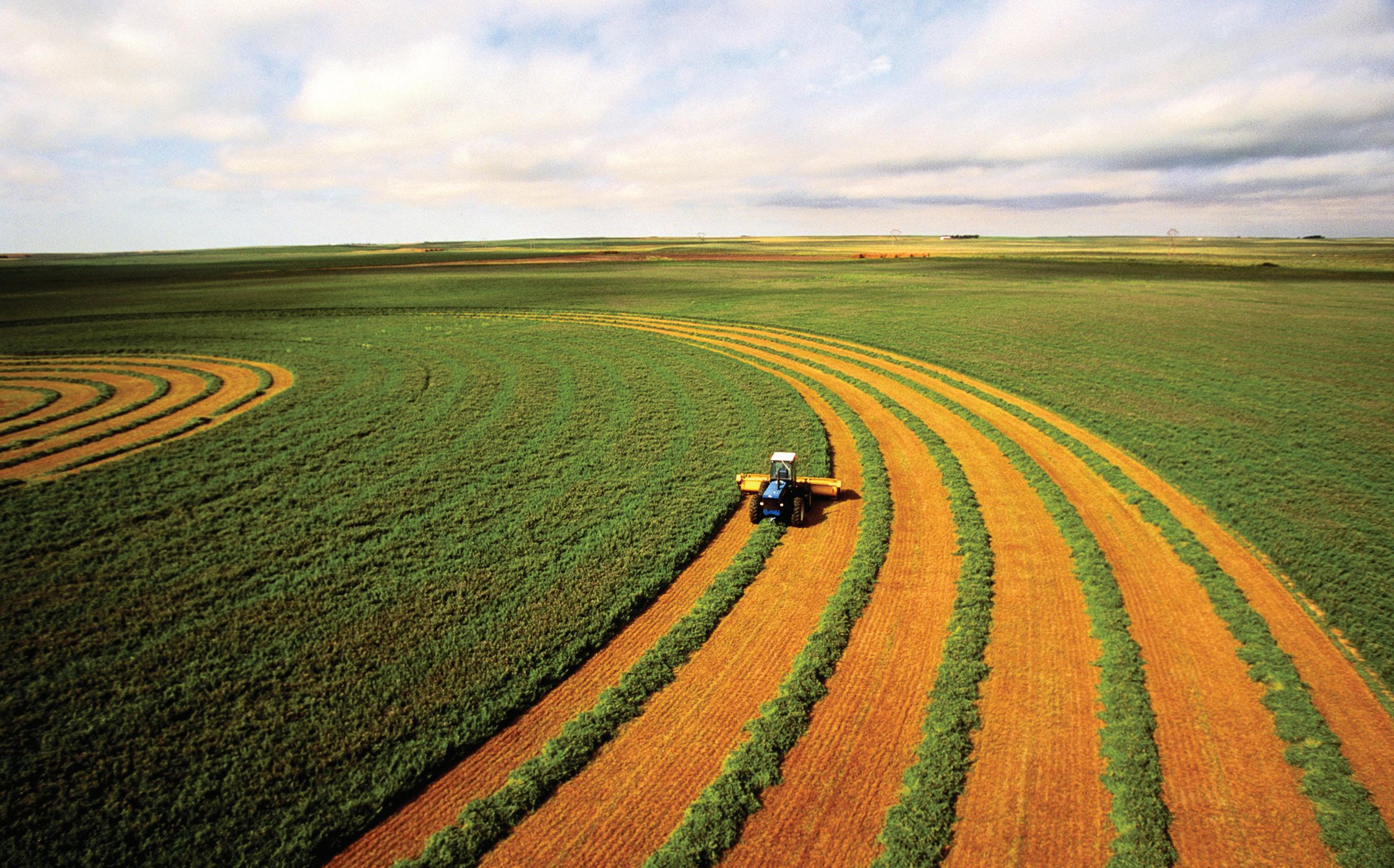
production to woody grasslands suitable for grazing and using more diverse grass species across pastures. Enhanced soil carbon storage has also boosted microbial activity, increasing bird and insect life thereby boosting biodiversity. Another fascinating scientific innovation is helping address the methane problem. Analysis suggests introducing only a modest amount of asparagopsis seaweed into livestock diets can reduce methane production in bovines by 90%, whilst also helping with the efficiency of meat production. Other innovations have included working with state governments to create biodiversity credits for better pasture and wetland use. Simple adjustment of production timings, for example, have helped to protect birdlife and provide farmers incentives via credits.
Taskforce on Nature-Related Financial Disclosures (TNFD) following in the footsteps of its older Climate sibling (TCFD)
O’Leary represents Australia on the TNFD. A year into a 2-year mission, the taskforce will be issuing a disclosure framework for evaluating nature-based risks and
opportunities for companies and investors. Uniformity and quantification, in O’Leary’s view, will help with investor confidence and ultimately result in materially higher allocations to natural capital investments.
Carbon and nature-based credits open an exciting new investment opportunity Classic nature-based investments such as agriculture and timberland offer attractive characteristics like inflation protection, diversification and income. Developments in carbon and nature-based credits is


opening an exciting new opportunity set to add revenue streams, incentivise behaviour and drive capital into nature-based investment.
As O’Leary set out, until recently, changing behaviours to enhance biodiversity or sequester carbon was not valued. And the question of ‘who pays’ was not addressed. This is changing: A rapidly growing marketplace in both state regulated, and voluntary credits is helping to determine value and differentiate quality of credits. Australia is ahead of the game in focusing on agriculture. Other jurisdictions, for example California, support forestry.
The diversity of the marketplace is set to rise. Gardner set out the work Rebalance Earth and other new market entrants are doing to apply technology to place a value on the ecosystem benefits different species deliver. Directing capital to nations such as Gabon to protect natural life and discourage deforestation is a fascinating development to reward positive impact behaviours and deliver financial return.




Farming intensification has increased over the past half-century while there has been a rising societal awareness of the importance of managing natural resources in a way that preserves them for current and future generations. Instead of pitting the needs of nature and humankind against one another, however, this divergence has renewed recognition within the agricultural community that productivity, profitability, and sustainability can go hand-in-hand.
Agricultural operations are responsible for 14 per cent of Australia's greenhouse gas emissions, yet the land they use accounts for 55 per cent of the country’s entire landmass. As well-managed land has a high carbon sequestration potential, the opportunity exists for the nation’s pastoral and arable businesses to play a lead role in achieving net zero emissions by 2050.
The greater importance now placed on ecological custodianship by society and governments alike is increasingly allowing the costs of environmental management to be shared more broadly.
Elizabeth O'Leary, Head of Agriculture and Natural Assets at Macquarie Asset Management (MAM), says this shift in public perception has expanded how landscapes are managed.

“Twenty years ago, running a viable agricultural business meant a focus on maximising the amount of land available for grazing and arable purposes to produce the most valuable output: a food or fibre commodity. But things have changed, and the market now also sees value in the active management of the landscape and having a dual focus on productivity and sustainability. There is a willingness to pay for the protection and enhancement of the natural environment.”
A new generation of active sustainability practices has emerged as a result: nature-based

Negative emissions are needed to limit global warming. Source: Adapted from ‘A blueprint for scaling voluntary carbon markets to meet the climate challenge,’ McKinsey, 2021.
solutions (NBS), which use ecological activities such as tree planting, revegetation, and watershed protection to address societal challenges like climate change, food security and disaster risk reduction.
Proving the concept Paraway – one of MAM’s operating companies – has taken an active role in trialling NBS in the carbon and biodiversity spaces. Paraway has been exploring how to reduce the emissions intensity of beef cattle production by improving the way herds are managed, while also exploring opportunities presented by new techniques.
One such technique includes using a seaweed-based feed supplement to inhibit the production of climate-detrimental methane emissions by ruminant livestock, through an investment in Sea Forest. As well as reducing a herd’s climate footprint by cutting methane production, because the metabolic conversion of the gas uses a fifth of feed energy, limiting it can also increase productivity
with a reduced amount of feed – creating more food with less environmental impact.
Making commercial sense “Alongside a demonstrable impact on the environment, these projects can now generate bottom-line returns for the farms involved,” says O’Leary. “The scale and reach that we have across most cropping and pastoral regions in Australia gives us the unique ability to pioneer new initiatives that have the potential to be game-changing if they can be proven and scaled.”
Carbon sequestration projects began as a way for the sector to reduce its own emissions but expanding their use to meet the growing demands of other sectors for climate change mitigation activity – especially those classed as ‘hard to decarbonise’ – can be done with relative ease and has inherent value.
“Unlike some other industries grappling with a net zero commitment, with agriculture, all of these initiatives enhance returns,” says O’Leary.
The future of farming Australia’s crop and grazing industry has made among the most significant reductions in emissions of any of the country’s major industrial sectors – cutting them by around 71 per cent over the past three decades. Much of this decrement has come about through changes to land management practices, however the growth of the use of NBS is playing an increasingly important role.
Though estimates vary, up to a quarter of crop and grazing lands could be used for various forms of soil carbon sequestration projects by the middle of this century –potentially extracting between 35 and 90 million tonnes of CO₂ per annum from the atmosphere.
“Sustainability has always been a driving factor in the management of our agricultural assets,” concludes O’Leary. “However, we have a clear initiative to go beyond standard farm practices to leverage and enhance our natural capital to create resilient production systems and be an industry leader in farm-based decarbonisation.”

Marketing Material for Professional Clients Only
Importatnt Information: Reliance should not be placed on any views or information in the material when taking individual investment and/or strategic decisions. Schroders has expressed its own views and opin ions in this document and these may change.
Third party data is owned or licensed by the data provider and may not be reproduced or extracted and used for any other purpose without the data provider's consent. Third party data is provided without any warranties of any kind. The data provider and issuer of the document shall have no liability in connec tion with the third party data. The terms of the third party’s specific disclaimers, if any, are set forth in the Important Information section at www.schroders.com.
Issued by Schroder Investment Management Limited, 1 London Wall Place, London EC2Y 5AU. Registration No. 1893220 England. Authorised and regulated by the Financial Conduct Authority. UK005355.
As Schroders publishes its Plan for Nature, here’s a round-up of some common natural capital and biodiversity terms investors should understand. Visit our dedicated website for more on the Plan for Nature here.
Earlier this year Schroders announced a partnership with Conservation International to launch Akaria Natural Capital, one of the first dedicated natural capital investment managers in Singapore.

Sometimes the terms natural capital and biodiversity are used in ways that suggest they are interchangeable. But biodiversity applies to the diversity of living organisms. Natural capital includes living organisms but also includes the flow of ecosystem services from this biodiversity.
Creating a circular economy that
limits pollution and waste, such as plastic pollution, and promotes re-use and recycling is critical in reducing the intensity of natural resource consumption and alleviating environmental pressures. Schroders engages to encourage companies to minimise waste and pollution and to promote circularity.
COP15 is the United Nations’ two-week biodiversity summit taking place from December 7-19 in Montreal, Canada, this year. It is the 15th meeting of the Conference of the Parties to the UN Convention on Biological Diversity. The biggest biodiversity conference in a decade, it was originally planned to take place in October 2020 but was delayed because of the Covid-19 pandemic. A Post-2020 Global Biodiversity Framework is expected to be agreed.
Forests are an important carbon
sink and they also play a critical role in the earth’s water cycle and sustaining biodiversity. Deforestation is a major contributor to greenhouse gas emissions and biodiversity loss. Schroders expects companies to eliminate exposure to commodity-driven deforestation and to promote the sustainable management of forestry assets.
Read more: Q&A: why tackle harmful deforestation – and how?
Nature’s important benefits are called ecosystem services. They
include food and water, pollination and carbon capture.
Schroders is among the financial institutions to have signed the Finance for Biodiversity Pledge, committing to protect and restore biodiversity through finance activities and investments. The Finance for Biodiversity Foundation is calling for action and collaboration between financial institutions and is a connecting body for signatories and partner organisations.
The Just Transition Finance Challenge is an initiative to mobilise more public and private capital into investments that support a just transition to net zero in the UK and other developed and emerging markets. It was launched by the Impact Investing Institute in May 2022.
The Make it Mandatory campaign from Business for Nature, a global coalition of more than 75 organisations, is calling for mandatory requirements for all large businesses and financial institutions to disclose their impacts and dependencies on biodiversity by 2030.
Last year Schroders and Oxford Sciences Innovation announced their investment into natcap research, an advanced nature and climate intelligence platform which enables clients to measure, enhance, value, and report natural capital.

Natural capital refers to the stock of renewable and non-renewable natural assets, such as soil, forests, air, water, geology, and all living organisms. They provide vital ecosystem services, for example carbon capture, pollination or protection from soil erosion and flooding. More than 50% of global GDP, $44 trillion of economic value, depends on natural resources.
More than 50% of global GDP, $44 trillion of economic value, depends on natural resources
The Natural Capital Investment Alliance aims to accelerate the development of natural capital as a mainstream investment theme. Schroders joined the NCIA on day two of the COP26 summit in Glasgow last year.
Read more: Q&A: What is natural capital and why should investors care?
Natural climate solutions
Natural climate solutions are efforts to conserve, restore or improve ecosystem services in order to absorb and store carbon from the atmosphere.
Nature positive
Nature positive is a term being used to describe an approach that enriches biodiversity, stores carbon, purifies water and reduces pandemic risk. In short, a nature positive future will enhance the resilience of our planet and our societies. Civil society organisations such as the Global Commons Alliance are calling for a global nature positive goal to halt and reverse the destruction of nature by 2030 with a full recovery of a resilient biosphere by 2050.Increasingly, businesses are also adopting the term, with Science Based Targets for Nature being developed as a parallel initiative to science-based target setting on climate.
Read more: Peter Harrison: why we must make nature investible
Nature-based solutions are actions to protect, sustainably manage or restore natural ecosystems that address societal challenges such as climate change, human health, food and water security, and disaster risk reduction while providing human wellbeing and biodiversity benefits.
Nature-related risks include disruption of activities or supply chain; raw material price volatility; adjustment or relocation of activities; stranded assets; liquidity risk and legal, regulatory or reputational costs.
The degradation of natural capital, including the loss of biodiversity and depletion of renewable stocks, poses a risk for businesses, their earnings and their value. Schroders engages to encourage companies to develop strong governance on this issue, and adopt emerging good practices on nature-related financial disclosures and target setting.
Read more: Schroders’ awardwinning Engagement Blueprint
Examples of non-renewable natural capital include fossil fuels, soil and minerals that exist in finite amounts.
This draft global biodiversity framework from the UN Convention on Biological Diversity (CBD) is designed to guide actions worldwide through 2030 to preserve and protect nature and its essential services to people. It will be presented for consideration at the COP15 summit in Canada. It comprises 21 targets and 10 “milestones” for “living in harmony with nature” by 2050. Targets include ensuring at least 30% of land and sea areas, especially areas of importance for biodiversity, are conserved through equitably managed and protected. Another proposed target is reducing nutrients lost to the environment by at least half, pesticides by at least two thirds, and eliminating discharge of plastic waste.
Renewable natural capital
Professor Dieter Helm, who is a director at natcap research, points
to the North Sea’s fishing stocks as an example.
“If you eat kippers or herring, you’re enjoying the benefits of a renewable bit of natural capital. Provided we don’t overexploit this renewable natural capital, people in 100 years’ time will also be able to have kippers,” he says.
As long as natural stock is not driven below critical thresholds, the assets can regenerate. Video: what is natural capital?
Watch Video: what is natural capital?
Science-Based Targets for Nature (SBTN)
Science-based targets for nature are in the early stages of development by the Science-Based Targets Network. These targets are a way in which businesses can align their individual sustainability action with globally agreed environmental goals.
Sustainable food and water
The food and water system is both at risk from climate change and is a significant contributor to greenhouse gas emissions and other environmental pressures; for example, through the use of fertiliser and pesticides. Schroders engages to promote a food and water system that is more environmentally sustainable, healthy and better able to meet the needs of a growing population.
Read more: Sustainable food and water – why the current system needs to be transformed
Taskforce for Nature-related Financial Disclosures (TNFD)
Work has begun on a Taskforce for Nature-related Financial Disclosures with a plan to create a framework, similar to the Taskforce for Climate-related Financial Disclosures, for firms to disclose their exposure to nature-related financial risks by the end of 2023.
Harnessing the power of investment to accelerate a nature positive future. Find out more
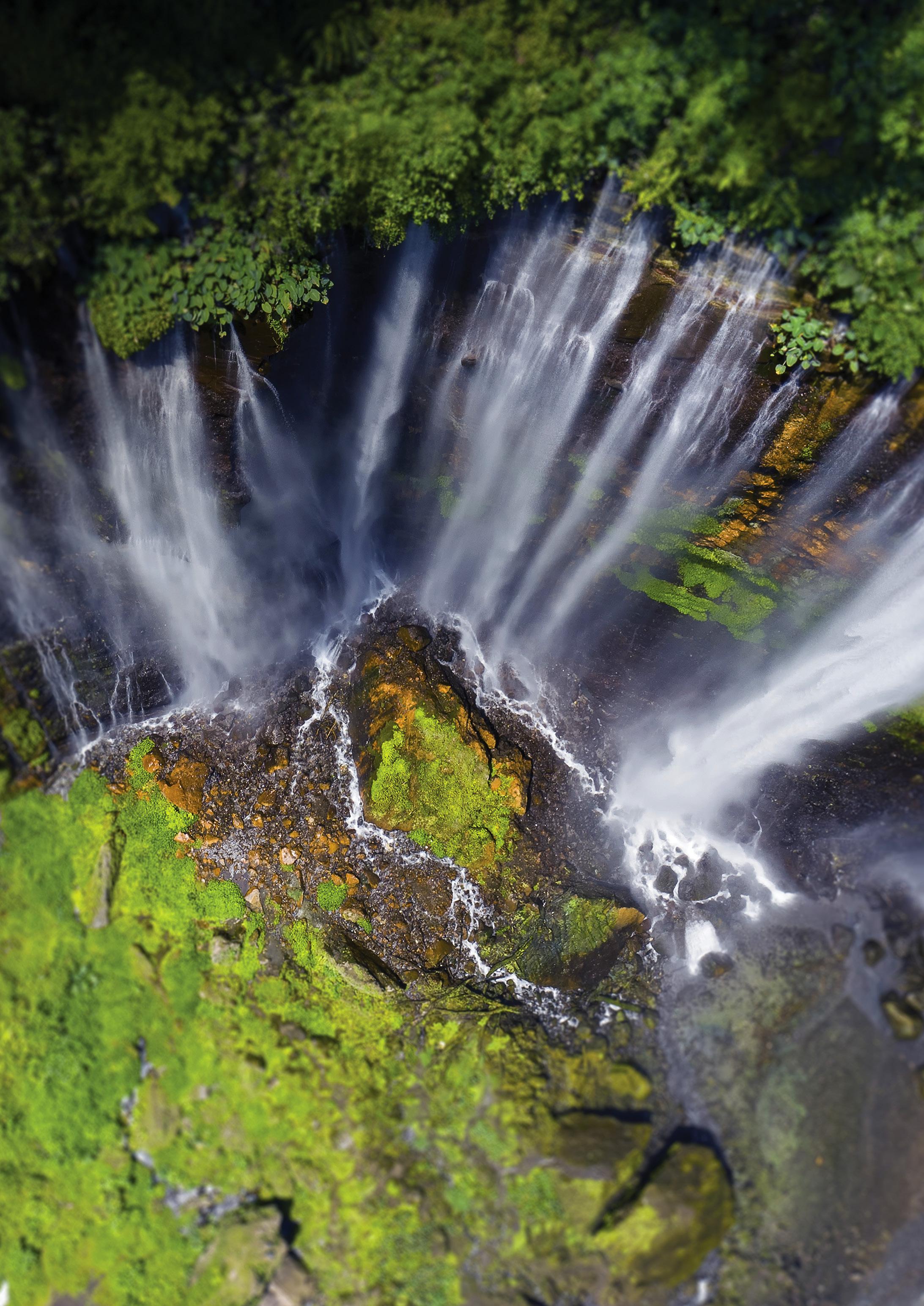

The global population is projected to have produced its 8 billionth mouth to feed in 2022. That is a doubling in less than 50 years. The impact on food production is massive and varied. A rising middle class in some regions is demanding a large increase in meat-based proteins. Whilst other nations, especially those susceptible to climate change, are exposed to life threatening food insecurity and calorie shortfalls. Modern industrial food production techniques are often destructive, billowing green house gases, degrading soils, polluting water resources and hammering biodiversity.
In the second panel of the Investing in Nature series we welcomed leaders to understand the challenges and the work that is being done to maximise production whilst minimising damage to natural resources.
delivering environmental impact
Click the Image to watch the webinar
Top
Bottom row: Paul McMahon, Matthew Scott
1The global population has ballooned. The Industrialisation of food production is proving unsustainable with soil degradation, pollution and a biodiversity collapse. Science and innovation are addressing the problem through enhancement of traditional systems and introduction of new technologies.
Agriculture brings valuable investment attributes and impact Scott’s role involves big picture portfolio thinking. Mercer’s view is inflation is likely to be higher and here for longer. Data suggests, and Bachmann and McMahon agreed, regardless of the farming approach, inflation is generally agriculture's friend, with commodity inflation being passed through to the end consumer and resulting in increased land valuation.
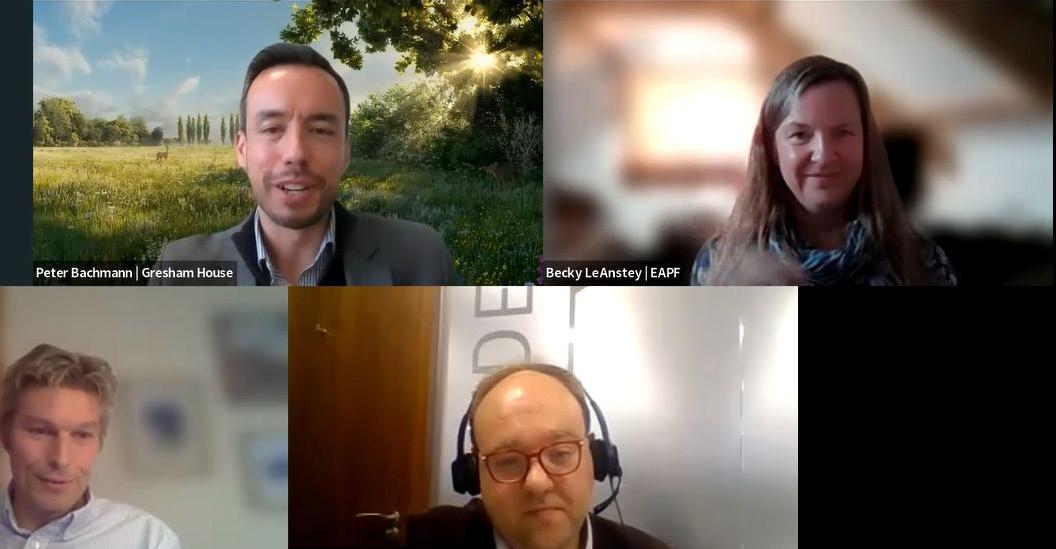
Peter Bachmann is Managing Director of Gresham House’s Sustainable Infrastructure division
Paul McMahon is co-founder and Managing Partner at SLM Partners



Peter Bachmann of Gresham House set out how vertical farming can be a game changer for food production efficiency, maximising output per acre whilst reducing inputs.
SLM Partners’ Paul McMahon explored regenerative agricultural systems and how they deliver returns whilst materially reducing the negative impacts industrial agriculture has had on biodiversity, soil health and pollution.
Traditional portfolios typically see land-based agriculture sitting in a real assets allocation. Historically, investors have been rewarded with stable returns driven by income and a general appreciation in land prices.
Clients seeking thematic ideas may also look to invest in ‘the future of food.’ And this could include private and public investments in
Becky LeAnstey is a Climate Investment Analyst at the Environment Agency Pension Fund

Matthew Scott is a Senior Investment Research Specialist at Mercer
Matt Johnston is founder of the Virtual Panel and chaired the panel
 row: Matt Johnston, Peter Bachmann, Becky LeAnstey
row: Matt Johnston, Peter Bachmann, Becky LeAnstey
vertical farming, hydroponics, seed science and venture capital in research and development
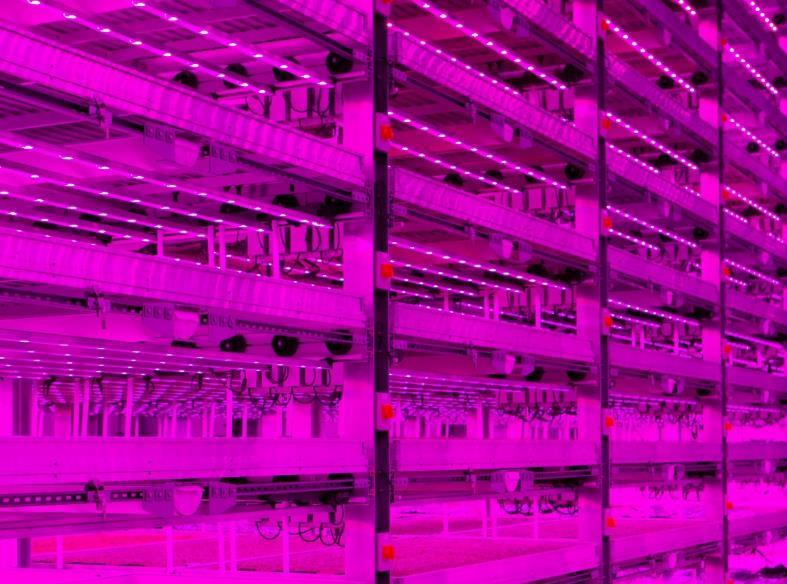
Impact measurement is also key Agriculture is at the heart of many, if not all the UN’s Sustainable Development Goals, Scott advised. Accordingly, clients seeking a ‘silver bullet’ to materially improve environmental impact may wish to explore what it brings to portfolios.

LeAnstey advised the EAPF have a double materiality mindset and look for investment return and impact. Impact reporting is key, and using science helps. Environmental DNA (EDNA), remote sensing and geospatial analysis, for example, makes data collection and analysis more efficient than using ecologist manpower. McMahon advised SLM Partners have put in place carbon reporting across all assets, and this can also help provide the data to build carbon credit return streams. Gresham House uses Scope 1, 2 and 3 carbon analysis on all assets and EDNA analysis in Environment Banks to monitor and track impact.
Peter Bachmann, an MD at Gresham House is responsible for
sustainable infrastructure at alternatives focused boutique, Gresham House. Framing the problem, Bachmann opined, ‘fundamentally, we are over-using the earth’s finite resources.’
Agriculture produces a third of carbon emissions for example. Plastic packaging is damaging land and water systems and the natural world is being demolished to make way for grazing lands. A radical change in systems thinking is needed.
Vertical farming is an area Gresham House have invested in and the stats demonstrate a vast improvement in efficiency. For example, one vertical farm can produce in 4 acres what 1,000 acres can in traditional farming. Carbon emissions are drastically reduced, and water efficiency is also improved. There’s also been a radical improvement in shelf life alleviating food wastage and reducing food packaging, one of the material costs food retailers want to avoid.
Leafy greens and fruits are typical examples of produce grown in vertical farms. Bachmann acknowledges such production is not going to save the world! But, scientific research has shown

staples can also be grown in a closed environment. Research and development in pharmaceuticals and plant-based proteins, say, could add further returns.
Another area Gresham House is exploring are environment banks. This involves taking less productive land and investing to enhance biodiversity. As Biodiversity Net Gain (BNG) becomes embedded in local planning, environment banks can provide valuable credits that corporates will seek to meet future planning and TNFD obligations.
Today, conventional food production is heavily reliant on fossil fuels to power farm equipment and for fertiliser production and agrichemicals. This along with unsustainable farming practices has had a materially adverse impact on biodiversity, polluted water resources and damaged soil health.
Despite this, McMahon is optimistic: regenerative and organic techniques are materially enhancing outcomes. Minimising soil disturbance and use of covered crops helps enhance living matter
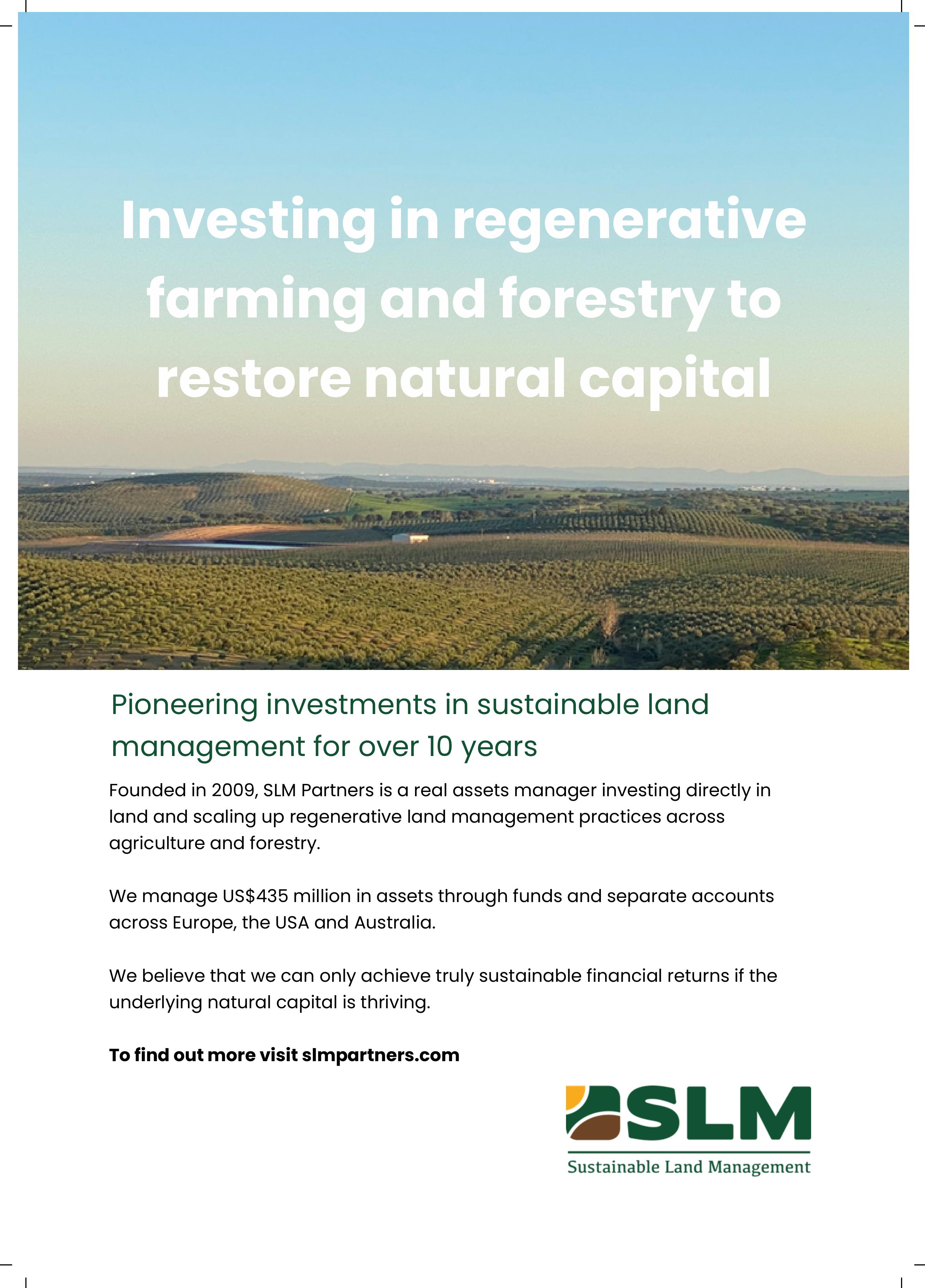
in soils enhancing its health and providing more fertile growing environments. Other developments include minimising chemical and fertiliser use, integrating livestock and diversifying crop production.


SLM Partners see dual benefits: first environmental - the techniques enhance soil health, biodiversity and materially enhance carbon sequestration. But secondly, there are economic benefits. Such techniques can be more profitable and help mitigate risks, with less reliance on fossil fuels and increased resilience to climate change. Using mother nature’s natural systems from carbon, solar and mineral cycles rather than expensive chemicals reduces costs and improve margins. Echoing thoughts from other presentations in the series, a new revenue line from carbon and nature credits could further boost returns and encourage capital into the natural world.
Scaling up and cold, hard economics!
Food production presently takes up nearly 40% of global land and is an $8tn global industry. Vast numbers bring opportunities for change, but how scalable are the solutions proffered by our speakers and are they sufficiently economically viable to displace embedded systems?
Although vertical farming, presently, is best known for leafy greens and salad vegetables, and there is great growth potential in these markets, Bachmann advised that staple production in soya, rice and wheat is coming. Costs need to come down, but scientists have proven production is possible.
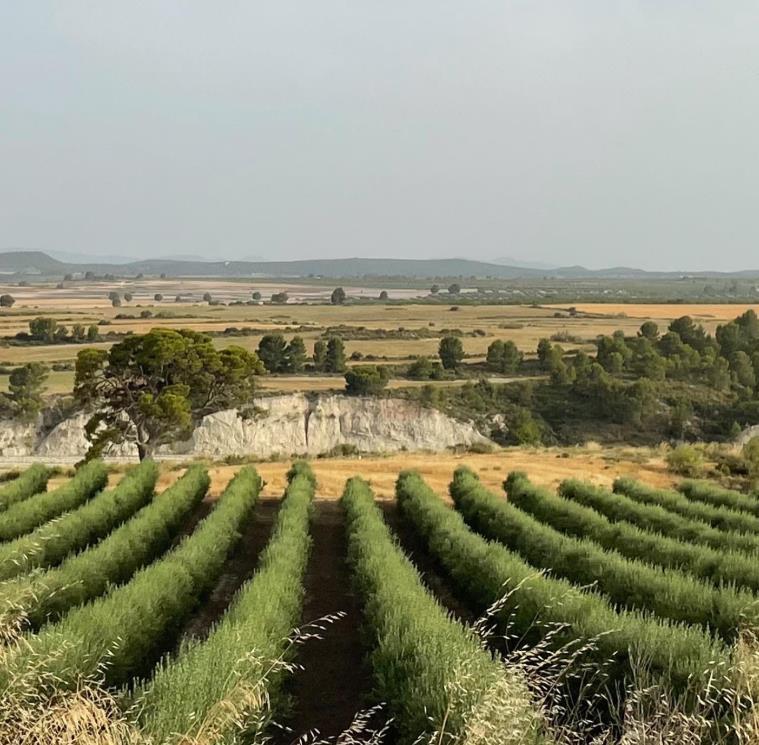
Economics also work in the vertical farm’s favour with sustainable produce at or below field grown crop prices. And costs are falling too. By way of example, LED lights, the artificial light source used in farming are becoming 10-15% more efficient each year.
McMahon believes land-based systems will remain the main system used to produce staples. ‘One thing you get for free as a
farmer is solar energy, so why not harness that!’ Coupled with regenerative techniques, sustainable agriculture can deliver real impact. Using the example of organic food production, only 1% of US land is organic certified, a million more acres would be needed to meet current market demand, and this is a market growing at around 8-10% p.a.
Balancing food security with a just transition

Modern farming techniques are making local food production viable across a wider diversity of crops. As Scott points out, until the onset of vertical farming techniques, producing all foods locally in the UK's climate would make for a very dull diet! Local production also reduces reliance on foreign markets, this is increasingly important in a volatile geopolitical environment.
Climate change is having a material impact on growing zones. The corn belt has moved 100 miles north in North America in the last 50 years whilst other regions are facing tougher production environments. A common theme regardless of geography is weather volatility with increasing flood, heatwaves and droughts.
Fundamentally, regenerative agriculture targets improved soil health, and this can help with water retention and release. Vertical farming and science have a role to play too: seed stock experiments can be quickly iterated to target crop resilience.

Technological change can displace jobs and communities. LeAnstey advised social impact is a key tenet on the Environment Agency’s mind as they consider investment opportunities. It is vital to bring communities on the journey, to share profits and encourage best practice.

Gresham House advised they have created around 1,650 jobs in various assets including vertical farming. And importantly, these are permanent rather than seasonal jobs, as is often the case in conventional farming.
One of the biggest problems in conventional farming has been the loss of workers from country to cities and into education in search of better lifestyles. Regenerative techniques could increase value and reduce costs. SLM Partners believe better margins, and less chemically toxic working environments should result in better lifestyles and encourage future generations to farm.
Gresham House is a specialist alternative asset manager, offering funds, direct investments and tailored investment opportunities.
Vertical farming can grow in 1 acre what it takes 250 acres out in the field, using up to 98% less water than traditional farming methods.
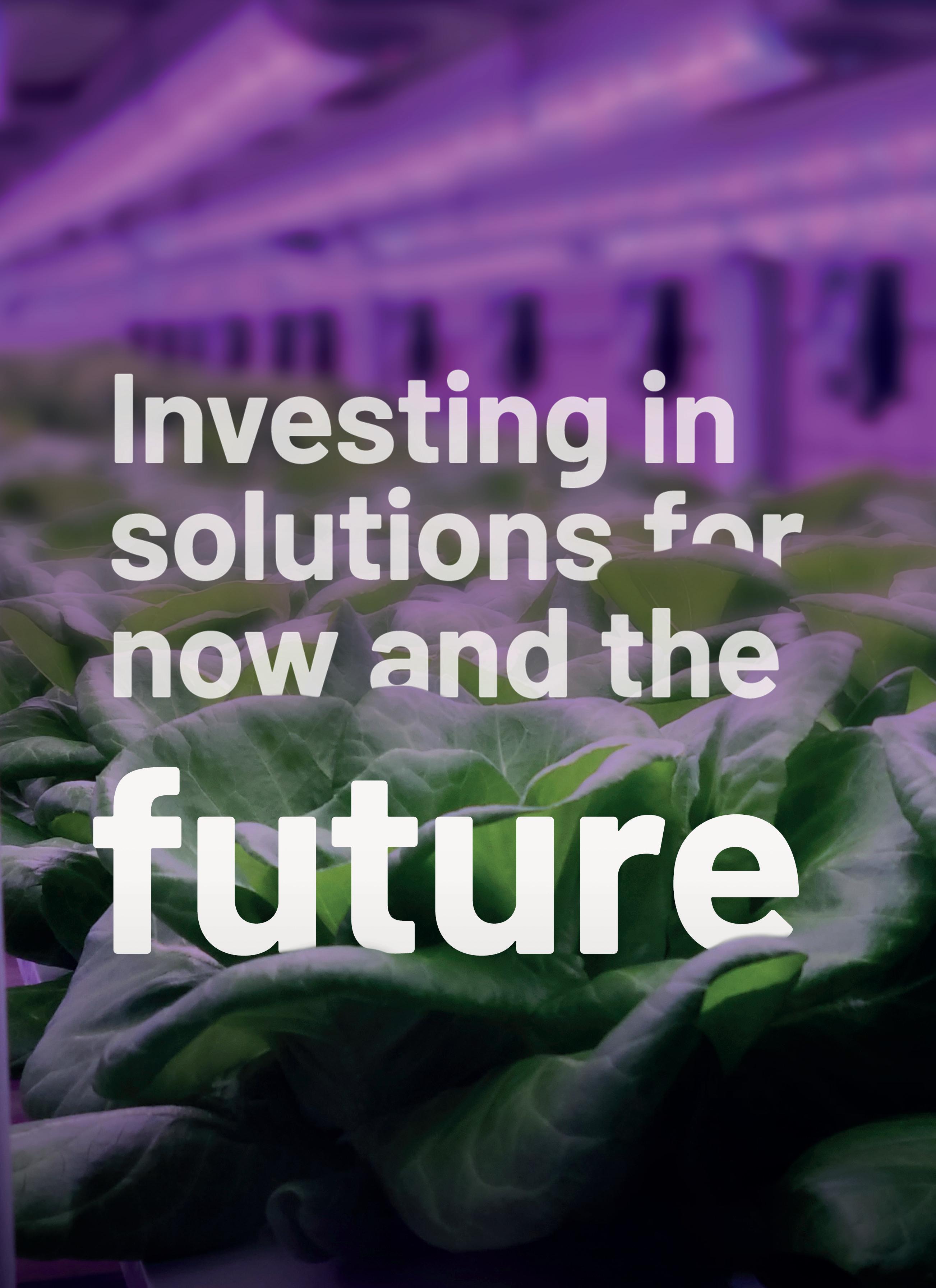
Today, we struggle to feed all of humanity and minimise our environmental impact; and, as the population continues to grow, we threaten to overwhelm our planet. In the last 40 years alone, 800m hectares of forests have been cut down related solely to food production1 2, this is the equivalent of the size of Australia. Vertical Farming uses otherwise unproductive land – and massively increases yields –and will ‘load-balance’ food production by freeing up arable land for crops that cannot be grown in this way.
Conventional farming needs good land and water, both of which are disappearing.
The best land is near rivers where people congregate and where towns and cities develop; and there is a very large amount of good land being concreted for buildings, factories, roads and car parks. That displaces farming to poorer-quality soils and natural habitats. Those soils are more prone to erosion leading to losses of massive quantities of topsoil which is required for 95% of food production, with estimates suggesting we only have 60 years of topsoil left at current erosion rates3.
Water is also becoming a major issue. 25% of global food production comes from aquifer water, which takes thousands of years to recharge. Most of that will be gone in the next few decades. A large percentage of the remaining water comes from river irrigation systems, which is also running out due to too much agriculture and erratic rainfall. This is causing many rivers to run dry and not even reach the sea. Finally, rain-based monsoonal farming, such as practiced in India, South East Asia and Southern China, are becoming more volatile with crops failing regularly due to lack of rain. Droughts have killed more people than any other natural disaster over the last 50 years, with 90% of these deaths occurring in developing countries4.
The impact on the natural world is even more dramatic. Humans are causing mass extinctions around the planet. This is directly linked to human population growth, the growth of cities and the destruction of the natural world for farming, mining, forestry products and overfishing with estimates that by 2048 there will be no more fish in the sea5.
We first invested in Fischer Farms in 2018. The business produces high-quality leafy greens at a vertical farm based in Burton-onTrent, UK.

These farms use very little land as they grow vertically, and they get significantly more harvests per year out of the same space. For every acre of land that Fischer Farms
occupies, you would need 250 acres of conventional farmland to produce the same amount of food.
They use 95% less water than required by field-grown crops: once their closed system is charged, water is recycled, so the only water they lose is in the cell structure of the plants they sell.
Their facilities can be sited on flat land of any quality, meaning they don’t need to encroach on the habitats of the animals with whom we share our planet and provide food security with the ability to grow 12 months of the year.
We recently appointed carbon consultants to analyse the carbon and wider environmental benefits of Fischer Farms’ second farm that is being developed. The analysis highlighted some material environmental benefits vs. traditional farming methods
including:
▲ 99% reduction in land required to produce the same yield as conventional farms
▲ <1% of the water-related emissions generated by conventional farming to grow the same yield
▲ 1,900 x less greenhouse gas emissions per tonne of produce compared to imported crops from Mexico
▲ 14-21 day shelf life extensions which drastically improve food waste and reduce the amount of plastic packaging
Medium term, vertical farming will look to grow soy, wheat and rice to allow the drastic reduction of deforestation and allow for creation of plant based proteins. Given the world’s cattle alone consume the caloric needs of 8.7 billion people - more than the entire human population on Earth6 - enabling low-carbon meat alternatives must be good for the planet
This is the future of farming. Ultimately we believe it to be the future of food. It is not just exciting. It gives us hope.
Sources
1 www.theguardian.com/globaldevelopment-professionalsnetwork/2017/jan/23/ destroying-rainforests-quicklygone-100-years-deforestation
2 www.greenpeace.org/usa/ forests/issues/agribusiness/
3 www.theguardian.com/usnews/2019/may/30/topsoilfarming-agriculture-food-toxicamerica
4 www.businessinsider.com/ un-droughts-killed-most-peoplein-worlds-worst-disasters-2021-9
5 www.theworldcounts.com/ challenges/planet-earth/oceans/ overfishing-statistics
6 www.peta.org/about-peta/faq/ how-does-eating-meat-harmthe-environment/
Red Batavia grown at Fischer Farms’ Farm 1 in Staffordshire2022has been a difficult year for investors in traditional asset classes. Equity and bond markets have whipsawed because of soaring inflation and interest rate hikes. But one alternative asset has been largely immune from this volatility –farmland. Farming and farmland have been overall beneficiaries of inflation because of high food commodity prices. In the USA, for example, the average price of cropland rose by 14% between December 2021 and August 2022. In contrast, the S&P 500 Index fell by 17% and the BofA 7-10 Year US Treasuries Index fell by 11% during the same period.
This is one reason why investors are paying more attention to agriculture, and its sister asset class, forestry, which together make up the category of Natural Real Assets. There are strong financial reasons for long-term investors to allocate a portion of their portfolio to Natural Real Assets. As well as providing steady capital appreciation, across economic cycles, these assets can deliver stable income yields as an alternative to bonds. They are a natural hedge against inflation because the commodities produced comprise a big part of the basket of goods that define inflation.
Historically, farmland and timberland investments have matched the returns of other asset classes (equities, bonds, real estate) but with lower volatility. And owning these assets provides access to a new upside in the form of carbon markets and other environmental payments that are starting to emerge.
By Paul McMahon, Managing Partner, SLM Partners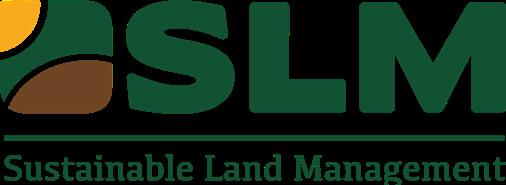
This last point highlights the other reason why investors are attracted to Natural Real Assets. Investment in this sector has the potential to deliver important positive environmental impacts around climate, biodiversity, soil health and water. Investors have signed up to many environmental commitments in recent years – investing in agriculture and forestry can provide a tangible way to deliver on them.
Not all agricultural investment can deliver on these goals. In fact,
conventional agriculture is a major contributor to the cascading environmental challenges that now face us. Conventional farming is at fault for widespread soil degradation and the depletion of water resources. Intensive agriculture with pesticides and synthetic fertilisers is a main driver of biodiversity loss: one 2019 study found that it is the cause of 47% of insect decline globally.
Conventional agriculture is highly dependent on fossil fuels and a major cause of greenhouse gas emissions (24% of the global total) through farm operations, soil carbon loss and deforestation.
The good news is that there is an alternative. There is a growing movement around regenerative and organic agriculture that can reverse this damage and deliver positive environmental outcomes.

Regenerative agriculture is manifested in many different ways, but it has a few common principles. It seeks to minimise soil disturbance, to keep soil covered (e.g. through cover crops), and to maintain living roots in the ground all year round. Regenerative farmers minimise the use of
chemicals, instead relying on biology for fertility and pest control. They also implement more diverse cropping systems and seek to integrate livestock where possible.
When done well, regenerative agriculture has the power to restore soils, improve biodiversity and safeguard water. It can also turn farming from a carbon source to a carbon sink: Project Drawdown estimates that food and land use account for 43% of the world’s CO2 removal potential. Regenerative farming can also be more profitable, either because it delivers more yield from the same land, reduces input costs, allows farmers to tap into higher-value, premium markets (e.g. organic certification), or creates new income streams from ecosystem services (e.g. carbon credits).
Investors can help scale up regenerative agriculture by investing in land alongside farmers and providing the capital required to transition to new practices. This is the approach that my firm, SLM Partners, has used for more than a decade. We now manage $435 million in capital commitments, across funds and separate accounts
in Europe, the USA and Australia. We believe that we can only achieve truly sustainable financial returns if we are enhancing natural capital.
Our activities span organic grains, grassfed beef and sustainable forestry. Recently, we have been on a journey to understand how the principles of regenerative agriculture can be applied to permanent tree crops, such as nuts and olives. These trees produce nutritious, high-value products but they are often grown with lots of chemicals and soildepleting practices. We have been excited to discover local farmers in Europe and the USA who have developed regenerative systems that are better for the environment while strongly profitable. We launched a new fund in Europe to help these farmers scale up and have completed our first investments in Spain and Portugal.
Investors are increasing their allocations to Natural Real Assets because of the twin goals of portfolio diversification and positive environmental impact. Regenerative agriculture is an attractive opportunity because it can deliver on both.
To meet the projected wood demand in 2050, whilst conserving the world’s natural forests, will require investment into at least 3 million hectares of new plantation forests annually over the next decade. Investing in natural capital has entered institutional portfolios as an established and proven strategy that provides mitigation for climate change, biodiversity and resource challenges whilst delivering long-term sustainable returns. Through rising demand for primary wood products, the forestry sector is experiencing a growing reliance on new plantation forests to alleviate pressure on natural forest resources. In the path to tackle these global challenges, the spotlight is falling on institutional investors to allocate capital into impact investment opportunities such as forestry solutions.
Last month, the UN’s Food and Agriculture Organization (FAO) published a report focusing on the outlook for the global forest sector and highlighted that global consumption of primary processed wood products is expected to grow by 37% between 2020 and 2050. In 2020, worldwide production of industrial roundwood reached just under 2 billion m3. Planted forests contributed 46% of this supply, despite comprising just 7% of the world’s total forest area.

To meet the anticipated growth in demand, the FAO estimates that at least 33 million hectares of additional highly productive plantation forest will need to be established. Most of these new plantations will take 20-30 years before they reach maturity, implying that most of them will need to be established within the next decade. This means that more than 3 million hectares of new plantations will need to be established annually.
Further research from a team at the Thünen Institute of Forestry , suggested biodiversity strategies

proposed by the EU could materially reduce wood supply from the region’s existing forests. This, and similar strategies in other regions, could lead to an even greater reliance on plantation forests to meet future demand.
Wood as a substitute
Another factor impacting future wood demand is the increasing use of wood products as a substitute for traditional construction materials. The manufacture of wood products releases significantly less CO2 than materials such as concrete or steel and offers a significant opportunity to reduce emissions and shape climate strategy. Furthermore, the transfer of carbon from sustainably managed plantations to long-lived wood products used in buildings allows them to become a unique carbon sink.
In recognition of this, the FAO’s report estimated that this substitution effect could lead to an additional 8% in demand for wood products by 2050. To meet this demand would call for a further 7 million hectares, taking the total area of new plantations required to 40 million hectares.
The FAO indicates that the cost for establishing pine and eucalyptus plantations ranges between USD 500 and USD 1,200 per hectare. Stafford believes that these costs are at the low end for good quality commercial plantations and estimates that USD 10 billion per annum would be required to establish 40 million hectares over the next 10 years, with a further USD 12 billion per annum needed for land acquisition.

Accordingly, in order for these plantations to be established over the next decade, a total of USD 220 billion will need to be provided, predominantly from the private sector. To facilitate this, Stafford is raising a USD 1 billion Carbon Offset Opportunity Fund focused on new plantation development.
Stafford’s Carbon Offset Opportunities Fund, an Article 9 SFDR impact fund.
The insights provided by the FAO align strongly with Stafford’s decision to complement its 20-year long timberland strategy with one focused on carbon. The expansion of well-managed commercial plantations is critical to:
1) Supplying raw wood materials sustainably
2) Mitigating climate change
3) Providing biodiversity conservation by reducing harvesting pressure on natural forests
Stafford’s Carbon Fund provides access to a diversified portfolio of forestry assets, whilst generating a supply of carbon credits verified by recognised international carbon standards. The strategy welcomes investors that are looking to allocate capital into solutions that deliver attractive returns and positive impact.
Learn more about Stafford Carbon
“USD 220 billion needs to be provided from the private sector for these plantations to be established over the next decade.”
The third and final panel of the Virtual Panel Investing in Nature series brought together investment leaders to evaluate the challenge and invest ment opportunities arising from biodiversity loss.

In 2019, The Economics of Biodiversity: The Dasgupta Review was published. The review highlighted how the Anthropogenic Epoch, in search of economic growth and GDP maximisation, has resulted in immense depletion of natural resources and biodiversity.
It’s taken time, too much time, but the world is waking up, and the investment industry is at the vanguard attracting attention and capital to target change. COP15, the biodiversity conference in Montreal in December 2022 was just round the corner when we held the series. The conference will add further impetus, with high hopes it will give
Click the Image to watch the webinar
Top row: Matt Johnston, Alina Donets, Celine Legaspi
Bottom row: Velislava Dimitrova, Leah Worrall
direction on consistency of measurement and reporting.
Until recently, a lack of emphasis on fair valuation of nature’s resources has created huge negative impacts on biodiversity. Understanding and measuring biodiversity impact is complex, local, and nuanced. Investment Industry focus and collaboration is driving change.
Biodiversity is the variety of all living things; organisms that promote healthy ecosystems and help replenish the stock of natural capital.
AlIna Donets is a Portfolio Manager with Lombard Odier Investment Managers

Velislava Dimitrova is a Lead Portfolio Manager with Fidelity International
Alina Donets of Lombard Odier set out how careful direction of capital to solution providers will deliver technological innovation across the breadth of natural systems. Velislava DImitrova of Fidelity articulated the vital role engagement plays in driving better outcomes.

The panel agreed momentum is gathering. Education, collaboration and ultimately investment is on the rise. And that is going to be needed with trillions needed to address the existential risk of biodiversity collapse.
Estimates suggest over half of global GDP is dependent on nature and more than a billion of people rely on forests for their livelihoods, whilst many more work in, or rely on, land and sea for food production. Land and oceans are estimated to absorb more than half of all carbon emissions. But, these ecosystem benefits are simply ignored or vastly under-estimated in traditional economic models. The results have been devastating: The WWF Living Planet report estimates close to 70% of wildlife
Leah Worral is Deputy Head of ESG Insight & Investment Consultant at isio

Celine Legaspi is a sustainable Investment research specialist at Redington


Matt Johnston is founder of the Virtual Panel and chaired the panel

populations have been lost since the 1970s. Up to 1 million species are threatened with extinction, and deforestation and the loss of as much as 85% of wetlands such as salt marshes and mangrove swamps, vital carbon sinks, will exacerbate climate change.
Are clients engaged, interested, and sufficiently clued-up?
It is clear we have an existential issue to address. The investment industry has the power to engage, and direct capital. But are clients on the same page, or do they feel overwhelmed? Investment consultants’ Celine Legaspi of Redington and Leah Worrall of isio outlined what they are seeing.
Worrall advised, ‘the ESG universe is massive, isio’s role has been to educate but as importantly help clients set priorities. The SDGs and other collaborative initiatives provide useful frameworks to do this.’ Legaspi echoed these thoughts, but also advised clients have also been proactive in coming to Redington, ‘collaboration is needed, and that includes asset managers, owners, clients and investment consultants, for example on consulting on TNFD.’ Both isio and Redington have issued papers and surveys to move the conversation forward and help clients get their arms around a complex topic.
Natural resources and biodiversity are complex, local, and nuanced and there’s considerable inter-connectivity. Accordingly, there can be both synergies and trade-offs across different ESG frontiers including climate, nature and social. Care is needed to construct strategies that get us to the desired outcome. In the biodiversity realm, for example, this could target enhancing mean species abundance. Our panel reached consensus that careful analysis and understanding are needed to ensure that capital directed to solve one problem is not deleterious elsewhere.

A comprehensive assessment of key environmental dimensions
Toxic waste
There has been a 50 fold increase in the production of chemicals, including plastics since 1950; roughly 80% of all plastics ever produced remain in the environment.
Atmospheric particulate matter (i.e., fine dust) causes deaths of 4.2 million people a year.
The yearly safe rate of extinctions is below 10 extinctions per 1 million species. Current rates are 10x higher.
Key ecosystems such as the Amazon depend on soil moisture (green water) and are drying out. By 2025, 2/3 of the world’s population may be facing water shortages (blue water).
Beyond zone of uncertainty
In zone of uncertainty Below boundary




The



















Due to the Montreal protocol banning CFCs, the boundary is no longer being transgressed.
Deforestation causes CO2 emissions and the degradation of carbon sinks, accelerating climate change.
Chemical fertilizers cause the crossing Nitrogen (N) and Phosphate (P) boundaries by 200 250%. 20% of N and P fertilizer is lost through runoff, leading to eutrophication.
Biodiversity: One of the 9 planetary boundaries, but given insufficient attention
Biodiversity: A key planetary boundary that requires more attention and investment ‘Whilst industry focus remains on climate change, this is only one of nine planetary boundaries. In our view, biodiversity should have equal importance’, Alina Donets, portfolio manager at Lombard Odier Investment Managers (LOIM) advised the panel. Due its powerful carbon sequestration attributes, ‘climate change cannot be solved without fixing the biodiversity challenge.’ The picture painted was one of interconnectivity: Biodiversity is being impacted not only by climate change but also by the impact of other boundaries: pollution to land and sea, toxic waste, and resource over-use.
To tackle the problem, LOIM have placed their focus on nature from two perspectives. Firstly, development of the circular bioeconomy through investing in bio-materials makers, regenerative agriculture and forestry. And,secondly, though better natural resource efficiency in production, consumption, and the recycling of waste products.
Sector and theme diversification is key to deliver a risk-balanced portfolio LOIM have screened the investment universe and identified a wide array of potential investments across sectors and industries. Diversification is important for portfolio risk management, but a systematic approach also protects against a narrow focus on isolated or niche investments. Donets gave examples to demonstrate the breadth of solutions that cross her desk.
Novozymes are a company operating in the biomaterials space. They are a global leader in developing enzymes and these can be used in a wide variety of ways to replace toxic chemicals. Leadership in a growing market makes the company attractive as an investment.
Turning to resource efficiency, aluminium producer, Norsk Hydro was discussed. The company have demonstrated leadership in integrating recycling into their operations for existing materials’ production. They are extending their addressable markets by seeking new materials in need of recycling, for example, batteries and creating solutions.
2 · Lombard Odier Investment Managers Please read important information at the end of the document.For investment professionals only
For investment professionals only
It ’s easy to talk about sustainabilit y But, to make a real difference, we truly engage with companies to influence behaviour. From cut ting coal financing to focusing on renewable oppor tunities, our ac tive ownership is making a positive and meaningful difference to the planet, and to por t folios.
Impor tant information: The value of investments and any income from them can go down as well as up and you may not get back the amount invested.
Discover how we can help your clients at profes sionals.fidelit y.co.uk

Risk is a double-edged sword. It can damage investment returns, profits, and products, but being on the right side of it, can deliver growth and return.
Velislava Dimitrova, a portfolio manager at Fidelity believes there is an underestimation of the speed of transition to a new circular business world order and the risks this brings. For example, Europe is introducing higher taxes on virgin plastic. This will increase packaging cost for companies relying on plastic. Industry disruption via innovation will impact traditional industries who are insufficiently nimble to move with the times. For example, vertical farming and plant-based proteins will impact the agriculture, chemicals, and fertiliser sector.
Dimitrova set out how Fidelity have categorised these risks to give a framework for identifying investment opportunities. For example, regenerative and organic farming and higher yielding crop seeds help in the food production sector, as does the technology of vertical farming and alternative proteins. Corteva, a pure play agriculture name is a leader in crop yield technology working on building resilience to climate change. Bakkafrost, a sustainable salmon farming company with market leading operations helps mitigate over-trawling of fish and collapse in stocks.
Noting a corollary to the climate debate, Dimitrova advised directing capital to companies who are offenders today but who have the best policies, practices, oversight and targets for change can improve impact delta. Data is an issue but disclosure and transparency are improving. The TNFD framework will help here too.
Partnering with others, they are using cutting edge technology to help measure biodiversity. Armed with data, the team can engage for change. Green PRAXIS for example has developed bioacoustics, a low
cost, non-invasive approach to measure species presence and intensity.
Question: Impact investment or engagement? Answer: Both! The biodiversity debate echoes others in the ESG realm. Some managers solely deploy capital in solutions providers, others do this, but also engage for change across the wider investment sphere.
Donets acknowledged the importance of engagement but advised the team’s focus is on innovative solution providers and this typically results in a focus on smaller and medium size companies. These businesses, have less knowledge and corporate governance resources and have benefited from LOIM’s education and advice on the data they need to collect and report on.
Dimitrova, advised they use a holistic approach, in her view ‘we need to push on both sides and encourage companies to change their behaviours as soon as possible as well as directing capital to the innovators.’ Fidelity’s specialist sustainability analysts are spread globally and that has helped to focus on key risks and opportunities in local and regional geographies.
Engagement is all very well, but change is needed and quickly! Using Colgate as an example,
Dimitrova advised they have developed recyclable toothpaste tubes, but the economics has meant their mass introduction is yet to happen. Engaging for investment in R&D and technology is needed to scale the solutions and make them viable.
Innovation is needed: How can we scale it?
Smaller organisations can often be fertile seedbeds for innovation, but these newer ventures can bring binary outcomes and associated risk for investors. Dimitrova, advised Fidelity seeks out ideas, but prefer to direct capital to businesses that are repurposing proven technology rather than ‘start-up’ type innovators. More capital and project diversity can mitigate risk but still allow scaling. Careful position sizing also helps to manage portfolio volatility.
Donets added another interesting aspect. Only investing in solution providers gives LOIM the opportunity to impact the investment economics of investment targets, but not only that, equalisation is also possible. “I do not have a moral right to choose between saving the fish in the sea or the animals on the land, but as an investor, I can make sure I allocate to assist with the cost of capital balance across biodiversity themes.’
An awareness of the risks and impending regulation brings opportunities
Shellfish are super-filters, each one capable of cleaning over 65,000 litres of polluted water a year.

And they never switch off.
It’s time to see nature for what it really is, our most valuable industry. Learn more about our natural capital strategy at LombardOdier.com

Biodiversity is essential to economic output and planetary stability. The circular bioecono my – in which biological resources are renewable, sustainably man aged, recovered and reused as much as possible – currently supports up to 6-7% of economic activity. But it has the potential to underpin 30%.1

Sustainability challenges are created by our linear take-makewaste economic model, in which we extract more than we need, make more than is necessary and waste much of this output. This destroys or disrupts ecosystems – and the biodiversity underpinning them –both through excessive materials extraction and waste.
We extract 92 billion tonnes of resources each year – equal to more than half the weight of Mt Everest2 – to produce goods. But 80% of products are used only once each month and less than 20% of refuse is recycled each year, with huge quantities sent to landfill.3 Plastic is a telling example: of the 8.3 billion tonnes in existence, 6.3 billion has become waste.4
Fashion’s faux pas, technology’s dark side
Globally, an estimated 92 million tonnes of textile waste is created each year and the equivalent of a waste-truck full of clothes ends up on landfill sites every second.5
Our track record on electronic
FOR PROFESSIONAL INVESTOR USE ONLY. This material is provided for information purposes only and does not constitute an offer or a recommendation to purchase or sell any security or service. It is not intended for distribution, publication, or use in any jurisdiction where such distribution, publication, or use would be unlawful. This material does not contain personalized recommendations or advice and is not intended to substitute any professional advice on investment in financial products. Before entering into any transaction, an investor should consider carefully the suitability of a transaction to his/her particular circumstances and, where necessary, obtain independent professional advice in respect of risks, as well as any legal, regulatory, credit, tax, and accounting consequences. This material is the property of LOIM and is addressed to its recipient exclusively for their personal use. It may not be reproduced (in whole or in part), transmitted, modified, or used for any other purpose without the prior written permission of LOIM. This material contains the opinions of LOIM, as at the date of issue. Neither this material nor any copy thereof may be sent, taken into, or distributed in the United States of America, any of its territories or possessions or areas subject to its jurisdiction, or to or for the benefit of a United States Person. For this purpose, the term "United States Person" shall mean any citizen, national or resident of the United States of America, partnership organized or existing in any state, territory or posses sion of the United States of America, a corporation organized under the laws of the United States or of any state, territory or possession thereof, or any estate or trust that is subject to United States Federal income tax regardless of the source of its income.
➡ Read More about Lombard Odierwaste isn’t much better. A record 53.6 million tonnes of e-waste was generated worldwide in 20196, driven by high consumption rates, short life cycles and limited repair options. Only 17% of e-waste is recycled each year, resulting in the loss of USD 57 billion worth of goods and materials that could be repaired or repurposed.7

Much non-biodegradable or improperly recycled waste occupies landfills. Over time, it can leak into the natural environment and significantly damage living organisms, with hazardous materials heavily impacting the survival rates of animals and plants.
In addition, clearing areas to create or expand landfill sites destroys existing natural environments, and as landfill piles up, local species are outcompeted by animals attracted to refuse, like rats and crows. Waste that is not sent to landfill often becomes pollution, directly harming terrestrial and aquatic wildlife.
What’s driving the growth of eco-design and repair?
Global consumers. Appetite for products developed from sustainable sources, and which are repairable and recyclable, is growing. Globally, 85% of people have favoured sustainable products in the past five years8 and one-third of consumers are willing to pay a
‘green premium’.4
Regulatory momentum. A key component of the EU’s Circular Economy Action Plan is a proposal for eco-design, making products more durable and fit for reuse and upgrading. Laws such as Right to Repair in the UK, which follows similar US and EU rules, compel manufacturers to make spare parts available to consumers, a move which is expected to extend the lifespan of products by up to 10 years.
Competitive advantages. In the electronics industry, eco-design is becoming a differentiator: improving energy efficiency, leveraging green processing and factoring durability and reparability into product designs are among the approaches used.9
Repair over refuse. More brands, retailers and specialists offer maintenance and repair services, and many already enable consumers to perform a range of repair tasks on goods including mobile devices, laptops, refrigerators, washing machines, ovens and coffee machines.
Our linear economic model is a major driver of biodiversity loss, which threatens ecosystem services vital to economic stability. Within the circular bioeconomy, companies are developing or
providing goods that require minimal or no extraction of new materials, and which embed reparability and recyclability into product design, thereby reducing waste. They appeal to increasing consumer demand.
1 Source: “Investing in nature at scale,” part of the Lombard Odier Zero-Hour Sessions at COP26 (November 2021).
2 World Economic Forum. Circular economy and material value chains. Accessed July 2022.
3 Statista. Size of largest landfills globally as of 2019. Accessed July 2022.
4 DW. There are 8.3 billion tonnes of plastic in the world. Accessed July 2022.
5 Ellen MacArthur Foundation. Redesigning the future of fashion. Accessed November 2022.
6 United Nations Institute for Training and Research. The Global E-Waste Monitor 2020 – quantities, flows, and the circular economy potential [website]. Accessed July 2022.
7 LOIM analysis. United Nations Institute for Training and Research. The Global E-Waste Monitor 2020 – quantities, flows, and the circular economy potential. Accessed July 2022.
8 Business Wire. Recent study reveals more than a third of global consumers are willing to pay more for sustainability as demand grows for environmentally friendly alternatives. Accessed July 2022
9 Pilotto Cenci, M., et al. ‘Eco-Friendly Electronics – A Comprehensive Review’. Advanced Materials Technologies. Volume 7, issue 2, February 2022.
"Our take-make-waste sysytem harms biodiversity at the beginning, through exessive materials extraction, and at the end, through crude waste disposal and pollution."
Biodiversity loss is a neglected risk that is now appearing on the radar of companies, investors, governments and other stakeholders.
Maintaining the Earth’s biodiversity, the balance and variety of plant and animal species, is of existential importance to human survival. Circa US$44 trillion of global value (>50% of global GDP) is generated in naturedependent industries (construction, agriculture, tourism)1. Whilst the remaining global GDP is not directly linked to nature, it will likely also be affected by extreme biodiversity loss due to the fine balance of natural ecosystems on which our economy is built.
The financial materiality of biodiversity loss across sectors is also becoming clear. Compromised ecosystems pose systemic risks to industry and the economy, whether that’s through downward valuation adjustments to vulnerable or stranded assets, the failure of previously reliable ecosystem services that are essential to certain industries (e.g., pollination), or impaired operations due to physical risks (e.g., flooding, fires). As policymakers introduce new frameworks for biodiversity, companies and investors will be forced to adjust. Biodiversity reporting and disclosure requirements, as well as related regulations, will become increasingly stringent, pushing investors and asset allocators to rethink how they evaluate company profiles.
This is a marketing communication. This information must not be reproduced or circulated without prior permission. Fidelity only offers information on products and services and does not provide investment advice based on individual circumstances, other than when specifically stipulated by an appropriately authorised firm, in a formal communication with the client.
Fidelity International refers to the group of companies which form the global investment management organisation that provides information on products and services in designated jurisdictions outside of North America. This communication is not directed at and must not be acted upon by persons inside the United States and is otherwise only directed at persons residing in jurisdictions where the relevant funds are authorised for distribution or where no such authorisation is required. Unless otherwise stated all products and services are provided by Fidelity International, and all views expressed are those of Fidelity International. Fidelity, Fidelity International, the Fidelity International logo and F symbol are registered trademarks of FIL Limited. Issued by FIL Pensions Management. Authorised and regulated by the Financial Conduct Authority. GLEMUS4294-0123
Biodiversity investment solutions are emerging as one of the largest investment megatrends of our generation and represent an enormous opportunity for investors. Given the complexity of resolving biodiversity loss, this is a secular theme underpinned by sustainable growth drivers measured in years and decades. Markets are prone to short-termism and myopia, failing to appreciate the duration of growth of firms exposed to biodiversity. This

feature together with the fundamental analysis of stocks has the potential to deliver alpha above the benchmark over time. As well as generating long-term alpha and helping to protect biodiversity by channelling capital towards biodiversity solutions, the theme has other benefits. In particular, allocating to the right biodiversity solutions should help investors hedge their portfolios against risks from the transition to a more sustainable global economy. These include disintermediation, regulation-driven cost increases, litigation, and reputational risks.
Investing in the entire biodiversity value chain

The challenge of supporting biodiversity is vast and multifaceted. There are a number of localised and global aggravators of biodiversity loss. We believe it’s crucial to invest in the entire value chain of solutions to biodiversity
loss to ensure a comprehensive, effective and enduring response. This means helping those solutions reach scale and lower cost as quickly as possible. While many causes of biodiversity loss can be addressed through solutions available today, there are some with no clear answers. For example, many different chemicals are used
in manufacturing, agriculture and in our daily lives, and while we may be able to reduce the amount we consume and dispose of, we cannot eliminate them.
Therefore, where commercial solutions are not yet available, we can support companies leading the way to finding these solutions. These companies may have the right policies or products and services in place and supporting them helps build the commercial frameworks required to tackle the causes of biodiversity loss. Many underlying causes of biodiversity loss can be addressed through technological solutions that already exist but may need capital to build cost efficiencies and/or accelerate global adoption. This includes not only nascent technologies such as new recycling equipment, but also established and profitable approaches such as sustainable fish farming. In this way, investors can capture the long-term structural growth opportunities of preserving biodiversity.
A comprehensive approach to biodiversity that invests in the entire value chain also makes sense from a portfolio perspective. By investing across a range of sectors, regions, market caps and types of investment, investors can build a diversified portfolio rather than being concentrated in a small group of industries or technologies that may trade in unison or are vulnerable to regulatory changes. Our comprehensive suite of active, thematic and collaborative engagements provides us with further opportunities to glean insights into companies’ biodiversity credentials and to champion for better industry practices.
Sources
1 World Economic Forum (2020), Half of World’s GDP Moderately or Highly Dependent on Nature, Says New Report.
2. Fidelity Equity research resources (including Sustainable Investing) as at 30 September 2022.
Bees play a crucial role in biodiversity, but their populations are under threatAllocating to the right biodiversity solutions should help investors hedge their portfolios against transition risks to a more sustainable economy
Show us the evidence. That is what our members ask when we tell them that we are investing responsibly. The Environ ment Agency Pension Fund (EAPF) is an open defined benefit scheme, which is part of the Local Govern ment Pension Scheme (LGPS). We have 38,500 members and assets of around £4 billion and are part of the Brunel Pension Partnership. The special thing about our membership is that they all work or have worked to help improve the environment in the public sector, be that directly or indirectly in supporting roles. A spirit of acting in the public good is strong for both our members and our Fund.
Our mission is to deliver a globally successful and truly sustainable pension fund. We believe we generate stronger financial returns by investing in companies that contribute to the long-term sustainable success of the economy and society as a whole. We also believe that climate and nature are interlinked themes that if not properly managed together have the potential to be a material financial risk to our portfolio. Whilst not forgetting that they also offer new opportunities to generate a good return. Our fiduciary duty to maintain a secure pension for our members is first and foremost, which means we need to properly assess and manage the risks and opportunities that climate and nature both provide.

As a pension fund, we diversify our portfolio to manage risk and return. While we invest significantly in green technologies, we still need to invest across the whole economy. We need all companies to improve their environmental performance, this includes reducing their emissions, adapting to be resilient to the climate change we are locked into and understanding and protecting the natural capital that their businesses are based on.
How do we achieve this? There is no one solution fits all, it is complex, it is location specific, and it is a journey. Every organisation will
We have set a target that by 2025, 17% of our investments across the portfolio will directly help tackle climate change

begin at a different level and should not expect to solve it with one change. It is about continuous improvement and translating the science into the action required. Recognising and openly acknowledging the challenge is the first step.
At EAPF our policy framework has been used to communicate our beliefs on climate and nature, setting out responsible investment aims and creating timebound targets to help achieve those aims. These consist of both portfolio level and topic specific targets including engagement, that we monitor annually to make sure they remain stretching.
Based on risk to the Fund, and our Fund’s focus on environmental issues, we agreed the following priority areas for engagement:
climate change, using resources sustainably and water. We recognise that we cannot solve these problems alone and have joined partnerships such as the Ceres Valuing Water Financial Initiative, IIGCC’s adaptation working group and Global Canopy’s deforestation-free pensions guidance to leverage the groups combined knowledge and achieve more together.
In 2014 we started to develop our Targeted Opportunities Portfolio (TOP) to increase our allocation to sustainable private markets. TOP enables the fund to invest directly in a few outstanding opportunities, which have strong financial and sustainability credentials. Today the strategic asset allocation to this portfolio is 4%. It offers us a broader scope than traditional private equity.
We don’t have all the answers and there will always be gaps in our knowledge as the data we need to make evidence-based decisions improves, so our plans to address the risks and opportunities of climate change and nature will remain a work in progress.
However, we know the direction of travel needed to create a sustainable economy and will set ourselves targets to help us achieve the actions needed to get there, so that we can achieve stable long term financial returns for our members.
The more engaged pension members are, the more likely they are to make good decisions around their pension – how much they’re contributing and where they are invested. After all, it’s the contribution amounts that, over time, make the biggest difference.
Disclaimer: This market commentary has been prepared for general informational purposes by the author, who is a part of Macquarie Asset Management (MAM), the asset management business of Macquarie Group (Macquarie) and is not a product of the Macquarie Research Department. This market commentary reflects the views of the author and statements in it may differ from the views of others in MAM or of other Macquarie divisions or groups, including Macquarie Research. This market commentary has not been prepared to comply with requirements designed to promote the independence of investment research and is accordingly not subject to any prohibition on dealing ahead of the dissemination of investment research.
Nothing in this market commentary shall be construed as a solicitation to buy or sell any security or other product, or to engage in or refrain from engaging in any transaction. Macquarie conducts a global fullservice, integrated investment banking, asset management, and brokerage business. Macquarie may do, and seek to do, business with any of the companies covered in this market commentary. Macquarie has investment banking and other business relationships with a significant number of companies, which may include companies that are discussed in this commentary and may have positions in financial instruments or other financial interests in the subject matter of this market commentary. As a result, investors should be aware that Macquarie may have a conflict of interest that could affect the objectivity of this market commentary. In preparing this market commentary, we did not take into account the investment objectives, financial situation or needs of any particular client. You should not make an investment decision on the basis of this market commentary. Before making an investment decision you need to consider, with or without the assistance of an adviser, whether the investment is appropriate in light of your particular investment needs, objectives, and financial circumstances. Macquarie salespeople, traders and other professionals may provide oral or written market commentary, analysis, trading strategies or research products to Macquarie’s clients that reflect opinions which are different from or contrary to the opinions expressed in this market commentary. Macquarie’s asset management business (including MAM), principal trading desks and investing businesses may make investment decisions that are inconsistent with the views expressed in this commentary. There are risks involved in investing. The price of securities and other financial products can and does fluctuate, and an individual security or financial product may even become valueless. International investors are reminded of the additional risks inherent in international investments, such as currency fluctuations and international or local financial, market, economic, tax or regulatory conditions, which may adversely affect the value of the investment. This market commentary is based on information obtained from sources believed to be reliable, but we do not make any representation or warranty that it is accurate, complete, or up to date. We accept no obligation to correct or update the information or opinions in this market commentary. Opinions, information, and data in this market commentary are as of the date indicated on the cover and subject to change without notice. No member of the Macquarie Group accepts any liability whatsoever for any direct, indirect, consequential, or other loss arising from any use of this market commentary and/or further communication in relation to this market commentary. Some of the data in this market commentary may be sourced from information and materials published by government or industry bodies or agencies, however this market commentary is neither endorsed nor certified by any such bodies or agencies. This market commentary does not constitute legal, tax accounting or investment advice. Recipients should independently evaluate any specific investment in consultation with their legal, tax, accounting, and investment advisors.
Past performance is not indicative of future results. This market commentary may include forward looking statements, forecasts, estimates, projections, opinions and investment theses, which may be identified by the use of terminology such as “anticipate”, “believe”, “estimate”, “expect”, “intend”, “may”, “can”, “plan”, “will”, “would”, “should”, “seek”, “project”, “continue”, “target” and similar expressions. No representation is made or will be made that any forward-looking statements will be achieved or will prove to be correct or that any assumptions on which such statements may be based are reasonable. A number of factors could cause actual future results and operations to vary materially and adversely from the forward-looking statements. Qualitative statements regarding political, regulatory, market and economic environments and opportunities are based on the author’s opinion, belief, and judgment.
Other than Macquarie Bank Limited ABN 46 008 583 542 (“Macquarie Bank”), any Macquarie Group entity noted in this document is not an authorised deposit taking institution for the purposes of the Banking Act 1959 (Commonwealth of Australia). The obligations of these other Macquarie Group entities do not represent deposits or other liabilities of Macquarie Bank. Macquarie Bank does not guarantee or otherwise provide assurance in respect of the obligations of these other Macquarie Group entities. In addition, if this document relates to an investment, (a) the investor is subject to investment risk including possible delays in repayment and loss of income and principal invested and (b) none of Macquarie Bank or any other Macquarie Group entity guarantees any particular rate of return on or the performance of the investment, nor do they guarantee repayment of capital in respect of the investment.
Past performance is no guarantee of future results. Diversification may not protect against market risk.

“The time to address biodiversity and ecosystem collapse is NOW!"
